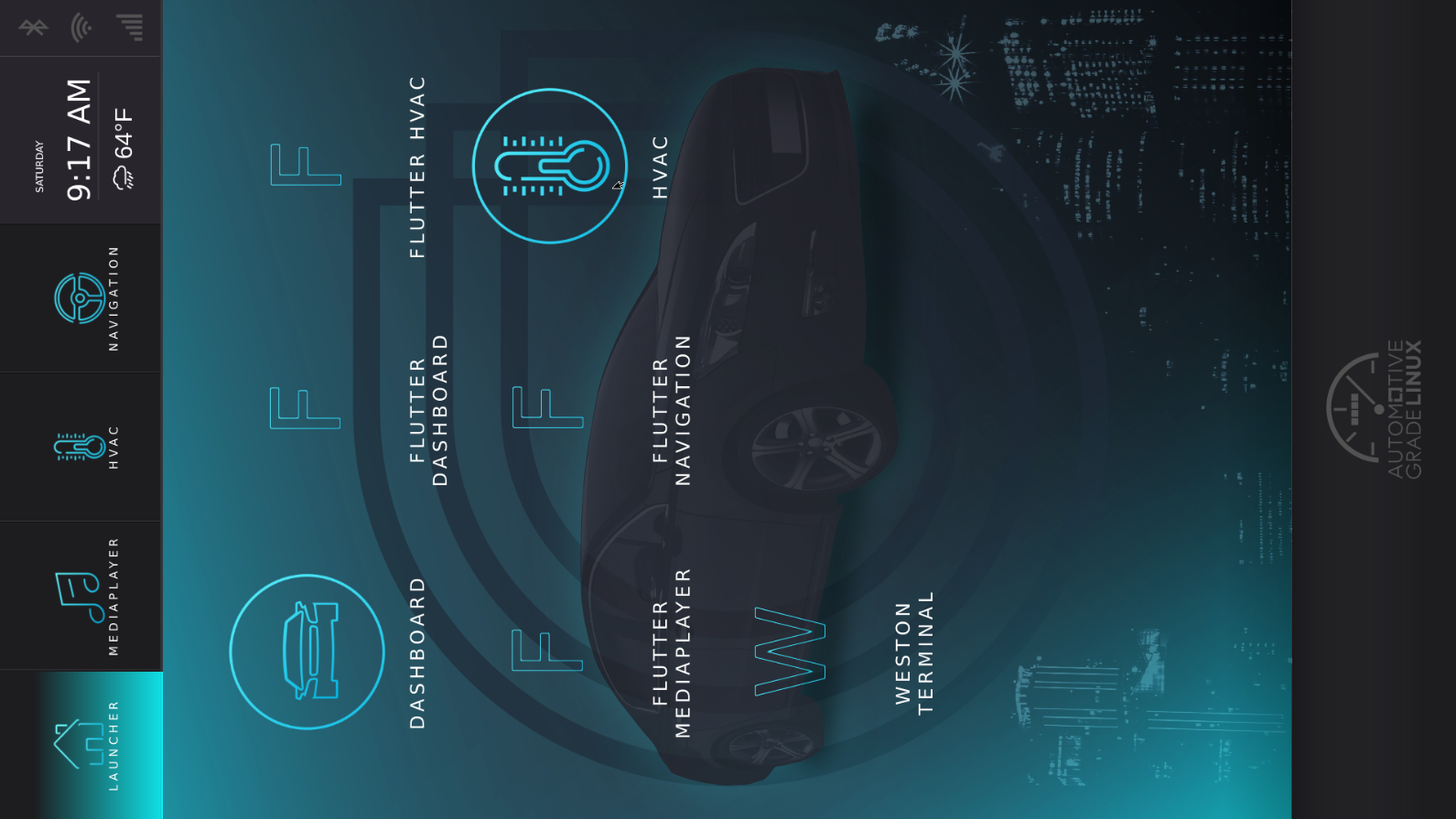Build and Boot AGL Flutter IVI dashboard demo applications made for GSoC¶
0. Prepare Your Build Host¶
- Install the required tools to build an AGL Image. For detailed explanation, check Preparing Your Build host
1. Define Your Top-Level Directory¶
$ export AGL_TOP=$HOME/AGL
$ echo 'export AGL_TOP=$HOME/AGL' >> $HOME/.bashrc
$ mkdir -p $AGL_TOP
2. Download the repo Tool and Set Permissions¶
$ mkdir -p $HOME/bin
$ export PATH=$HOME/bin:$PATH
$ echo 'export PATH=$HOME/bin:$PATH' >> $HOME/.bashrc
$ curl https://storage.googleapis.com/git-repo-downloads/repo > $HOME/bin/repo
$ chmod a+x $HOME/bin/repo
3. Download the AGL Source Files¶
To download the latest master branch AGL files, use the following commands:
$ cd $AGL_TOP
$ mkdir master
$ cd master
$ repo init -u https://gerrit.automotivelinux.org/gerrit/AGL/AGL-repo
$ repo sync
4. Initialize the build environment using aglsetup.sh Script¶
To initialize the build environment, we must use the setup script. This script is available here:
$ $AGL_TOP/master/meta-agl/scripts/aglsetup.sh
$ cd $AGL_TOP/master
$ source meta-agl/scripts/aglsetup.sh -b build-flutter-dashboard -m qemux86-64 agl-demo agl-devel
-
Here
-bis used to specify the build directory and-mis used to specify the target platform. -
Running this script, will create a build directory if it does not exist. Default build directory:
$AGL_TOP/master/build-flutter-dashboard - Default target paltform:
qemux86-64
5. Using BitBake¶
$ cd $AGL_TOP/master/build-flutter-dashboard
$ source agl-init-build-env
$ bitbake agl-ivi-demo-platform-flutter
6. Deploying the AGL Demo Image¶
Boot the image using QEMU
$ cd $AGL_TOP/master/build-flutter-dashboard
$ source agl-init-build-env
$ runqemu kvm serialstdio slirp publicvnc
6. Run the Graphics¶
To get graphics of the app, you need VNC client like VNC Viewer or Vinagre
- Open the VNC client
- Enter the server address as
localhost:0
That's it, you should get something like this:
